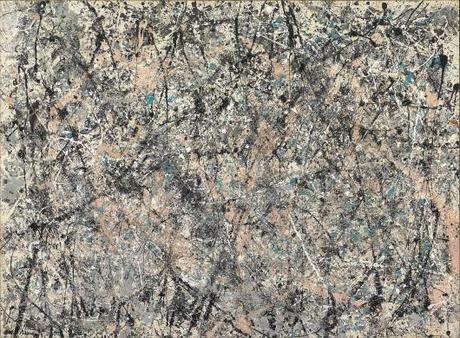
Mondrian vs Pollock abstract painting styles.
In the previous post dedicated to Mark Rothko and Joan Miró, I started mentioning some general charateristics that may transform an abstract painting into a universal long lasting fine art masterpiece.
Today, I want to continue this interestings talks mentioning two other big master painters and including 3 of their artworks that have already acquired the “masterpiece” attribute.
Piet Mondrian: Composition with Red, Blue, Black, Yellow, and Gray (1921)

Piet Mondrian drew his abstract work (that he started in 1917) from the continuos contemplation and analysis of nature, willing to extract and synthesize the guidelines underlying reality. Like Joan Miró, Mondrian worked a lot with the primary colors and the relationship between them.
Perpendicular lines that create niches, where the primary colors widen to the limits of the lines that support them. Structured and balanced compositions that arises from the tension that occurs between the vertical and the horizontal lines. The tension created at intersections sustains all rectangular geometry.
Jackson Pollock: Mural, 1943
Pollock is a painter with a gestural expression that takes place in a time of intense and dynamic inspiration. A physical body exercise that he carried to the canvas in a state of high concentration, where the space-time binomial merge into a single gesture that fills all the canvas plane with the same intensity. Large formats where body language is present in all the abstract artwork, and where the artist is able to transmit all his energy creating a personal and unique stamp.

The above 247 x 605 cms painting, today at the University of Iowa, is a famous mural that collector and artists mentor Peggy Guggenheim asked Pollock to make for her townhouse.
The below Pollock painting, called Number 1, can be currently seen at the National Gallery of Arts in Washington DC. It reflects Pollocks unique painting style and helps us better understand the differences between Mondrian and Pollock painting techniques and processes: Mondrian´s abstract art creations are a perfect example of a rational, analytical and delicate process that contrasts with Pollock´s visceral, emotional and physical one.

Why are they abstract masters? Besides many others, to me there´s an obvious one: once you see a Mondrian or a Pollock, any other artwork with small similarities to their art creations will always carry the “like Mondrian or like Pollock” comment.
What other abstract art creations do you consider to be masterpieces? Please add your suggestions below.
Hope you have enjoyed this post that was written in collaboration with figurative painter and artist´s mentor Xabier Ribas. Stay tunned and remember that to be updated on future articles you can subscribe to this art blog or follow yasoypintor on facebook, pinterest or google +.
I always try to attribute images and videos to their creators. If there is something misattributed or you would like it to be removed, please contact me.
